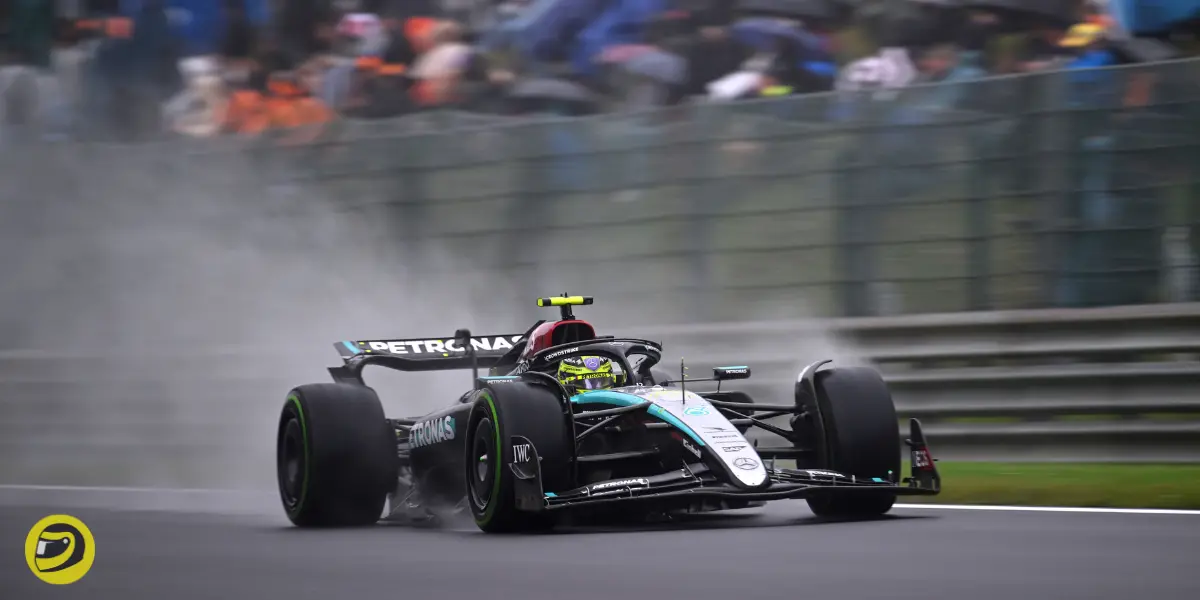Tyre wear suspected in Russell's spa disqualification drama
Mercedes suspects tyre wear from George Russell's one-stop strategy at the Belgian Grand Prix led to his disqualification for being underweight. The team is investigating the unique circumstances at Spa that contributed to this rare miscalculation.

George Russell's Belgian Grand Prix disqualification has left Mercedes scrambling for answers, with tyre wear emerging as the prime suspect in the weight controversy.
The team's bold one-stop strategy, which initially propelled Russell to victory on the road, may have inadvertently led to his car falling foul of the minimum weight regulations.
The Spa-Francorchamps circuit threw up a unique set of circumstances that contributed to this rare misstep from the usually meticulous Mercedes outfit.

As the team begins its post-race analysis, the focus is squarely on Russell's extended 34-lap stint on hard tyres and its impact on overall car weight.
The One-stop gamble
Russell's charge to the chequered flag was built on the foundation of an early pit stop on lap 10, followed by a marathon run to the finish on a single set of hard tyres.
This strategy, while masterful in execution, may have been the very thing that cost him the win.
Mercedes' trackside engineering director Andrew Shovlin acknowledged the potential link between the one-stop strategy and the weight discrepancy.

"We expect that the loss of rubber from the one-stop was a contributing factor, and we'll work to understand how it happened,"
Shovlin stated, emphasizing the team's commitment to a thorough investigation.
The weight of the matter
The 1.5kg shortfall that led to Russell's disqualification may seem substantial, but it translates to just 375 grams per corner – well within the realm of tyre wear over a long stint. Pirelli's head of F1, Mario Isola, provided context:
"Usually, it should be around one kilogramme"
of weight loss per tyre over the course of a stint.

This insight highlights the delicate balance teams must strike when calculating race weights, especially when unexpected strategies come into play.
Mercedes had not initially planned for a one-stop race, potentially leaving them vulnerable to miscalculations in their minimum weight projections.
Spa's unique challenges
The Belgian Grand Prix presents a distinct challenge when it comes to post-race weight management.
Unlike other circuits, Spa's length precludes the traditional slow-down lap where drivers can pick up rubber marbles to add weight before final checks.

This absence of a weight-gaining opportunity may have exacerbated Mercedes' predicament.Isola pointed out the significance of this factor:
"Considering that he is 1.5 kilos underweight, 1.5 kilos on four tyres is possible if you are just talking about the pickup."
" If you have a lot of pickup, then for 1.5 kilos, it would be less than 400 grammes on each tyre. It's a number that is possible."
A perfect storm of factors
As Mercedes delves deeper into the incident, several potential contributing factors have emerged.

The team's major car changes on Friday night, abandoning a new floor design, may have impacted weight distribution.
Saturday's wet conditions limited dry running data, potentially masking weight-related issues.
There's also the possibility that Mercedes simply pushed the limits too far in their weight calculations compared to other teams.
Notably, Fernando Alonso and Yuki Tsunoda both executed one-stop strategies without falling afoul of the weight regulations.
Learning from adversity
Mercedes team principal Toto Wolff acknowledged the complexity of the situation while maintaining a forward-looking perspective.

"I think it's a one stop and you expect lots of rubber, maybe more. But there's no excuse. If the stewards deem it to be a breach of regulations, then it was what it is,"
Wolff stated.
He added a note of encouragement for Russell:
"Obviously for George, that's a massive blow for a driver whose childhood dream is to be winning these races and it's taken away, but he's going to win many more."
As Mercedes regroups from this setback, the incident serves as a stark reminder of the razor-thin margins in Formula 1.
The team's ability to learn from this experience and refine their processes will be crucial as they look to bounce back in the upcoming races.





Comments ()